Public Weed Mitigation Guide
State of Utah Noxious Weed Classification System
Early Detection Rapid Response, plants not known to occur in Utah, but present in neighboring states. If found, high priority to eradicate.
Early Detection, plants that occur in Utah at low levels, eradicate known populations and prevent new populations.
Control, these species have reasonable distribution in Utah, but not everywhere.
Contain, plants widely distributed in Utah, try to reduce the spread.
Prohibited, present in Utah, illegal to sell or buy as ornamentals.
Tri-Canyons-Specific Invasive Species
How to recognize and manage them
 Garlic Mustard, Alliaria petiolata (Class 1B)
Garlic Mustard, Alliaria petiolata (Class 1B)
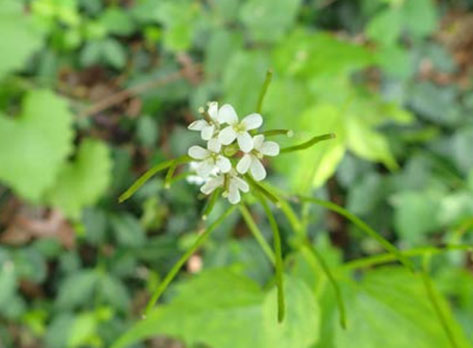
Originally native to Europe and most likely introduced as a culinary herb, garlic mustard is a biennial forb in the mustard family (Brassicaceae) that grows in the understory of woodlands and forests. During its first year, garlic mustard produces a rosette of kidney-shaped leaves. The second year it produces white flowers followed by ~7000 seeds. The best way to identify this species is by smelling the foliage which has a strong garlic odor. Vegetative parts of the plant seem to have allelopathic effects on surrounding plants.
 Management:
Management:
Plants should be removed from the environment before they are allowed to go to seed. Once garlic mustard gets established in an area it is extremely difficult to eradicate, so preventing spread is the number one priority. In established populations, a combination of hand pulling and chemical treatment can keep populations under control. The University of California Weed Research and Information Center recommends using the herbicide 2,4- D postemergence on rapidly growing plants before flowering. If you find garlic mustard on your property or anywhere in the Central Wasatch, contact CCF’s Plant Stewardship Director.
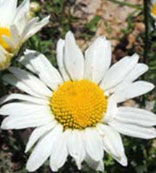 Oxeye Daisy, Leucanthemum vulgare (Class 1B)
Oxeye Daisy, Leucanthemum vulgare (Class 1B)
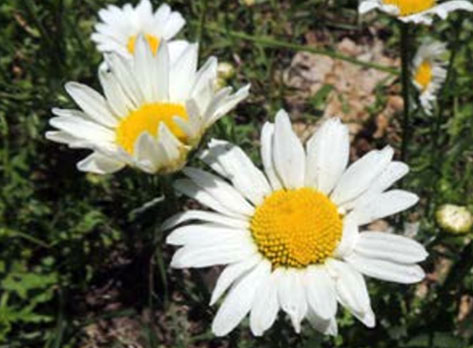
Oxeye daisy is a rhizomatous perennial that was originally introduced in the horticulture trade. It is often found in meadows, roadsides, waste areas, as it can tolerate poor soils and is drought tolerant. In the canyons, it has been planted as a backdrop for wedding photography at some of the ski resorts. If not controlled properly, it can grow so densely that it excludes native vegetation.
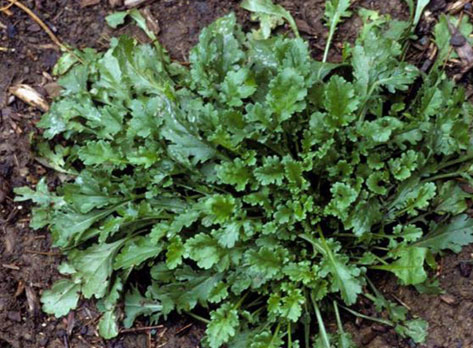 Management:
Management:
Dig up roots & rhizomes if possible, or mow before it goes to seed. Prevent seed heads from releasing into the environment. The University of California Weed Research and Information Center recommends treating with the herbicide 2,4-D and a preemergent (metsulfuron) in the spring and while plants are flowering.
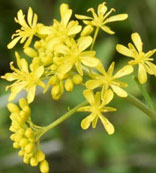 Dyer’s Woad, Isatis tinctoria (Class 2)
Dyer’s Woad, Isatis tinctoria (Class 2)
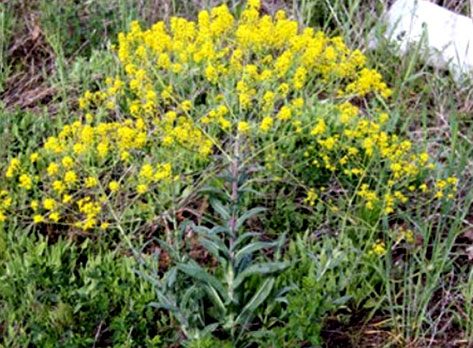
Dyer’s woad is a biennial forb in the mustard family (Brassicaceae) that grows in dense clusters and out competes native plants. Dyer’s Woad is a lower elevation invasive species that thrives in dry, rocky soil. Due to its habitat preferences, this species is a major priority for containment before it spreads to other foothill areas.
 Management:
Management:
Hand pulling is an effective management for this species, especially when the ground is wet and soft. Try to remove roots as much as possible, because dyer’s woad will go to seed again during the same growing season if chopped off above the root crown.
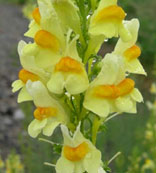 Yellow Toadflax, Linaria vulgaris (Class 2)
Yellow Toadflax, Linaria vulgaris (Class 2)
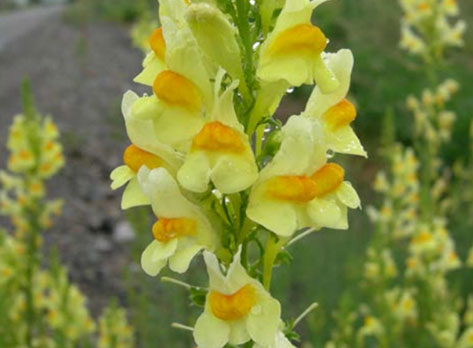
Yellow toadflax (also called butter and eggs toadflax) is a perennial flowering plant from Europe that is locally contained to just a few populations in the Tri-canyon area. It can survive well at high elevations and can form dense patches that displace native plants. It can reproduce by seed and roots.
 Management:
Management:
Hand-pulling is only effective on seedlings before the expansive underground root network has been established. There is an effective biocontrol available (a weevil) that reduces seed production. For chemical control, the University of California Weed Research and Information Center recommends 2,4-D or glyphosate.
 Dalmatian Toadflax, Linaria dalmatica (Class 2)
Dalmatian Toadflax, Linaria dalmatica (Class 2)
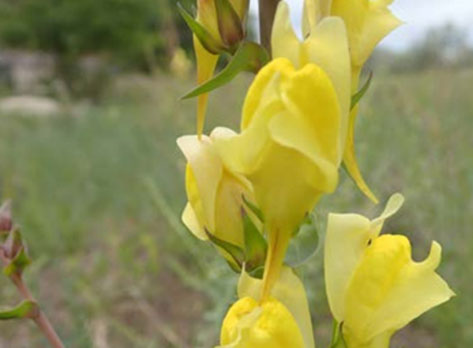
Dalmatian toadflax is a perennial flowering plant that can tolerate habitats from the Wasatch Front all the way to higher elevations around Alta Ski area. This plant can spread rhizomatously and resprout from roots when pulled as well as produce 500,000 seeds per plant (under optimal conditions).
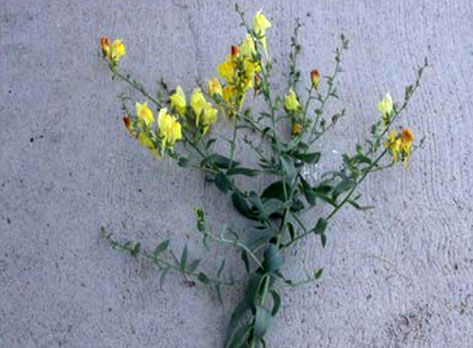 Management:
Management:
There is a biocontrol weevil available for this plant which is the most effective management tool for this species. Hand-pulling is not effective for this species.
 Leafy Spurge, Euphorbia esula (Class 2)
Leafy Spurge, Euphorbia esula (Class 2)
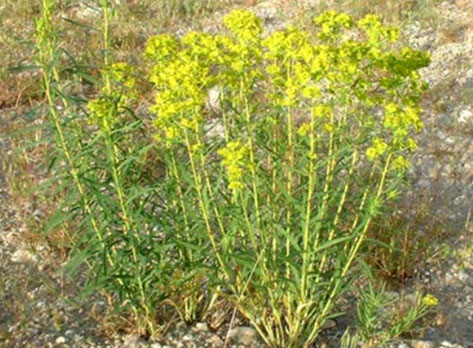
Leafy Spurge is an herbaceous perennial plant with only a couple small populations in the Tri-canyons so far. In other areas of the US, this species forms dense, clonal patches that suppress native vegetation.
 Management:
Management:
Pulling is not effective, this species needs to be sprayed every year with max label strength using 2,4-D or glyphosate, as recommended by the University of California Weed Research and Information Center.
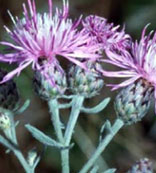 Spotted Knapweed, Centaurea stoebe var. micranthos (Class 2)
Spotted Knapweed, Centaurea stoebe var. micranthos (Class 2)
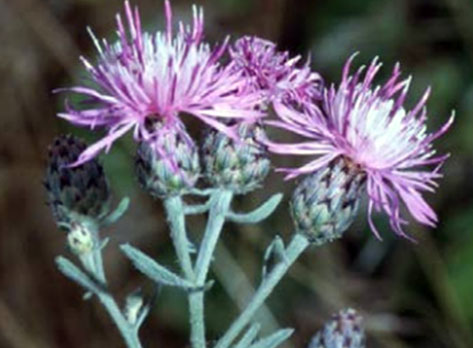
Spotted Knapweed is a biennial to short-lived perennial which usually gets established in disturbed areas but can spread into native plant communities and outcompete natives. Originally from Europe, this plant has become invasive in much of the Western US and has a deep, persistent taproot. There is also evidence to suggest Spotted Knapweed is allelopathic. One plant can produce 40,000 seeds.
 Management:
Management:
A combination of repeated hand pulling and chemical treatment (the University of California Weed Research and Information Center recommends 2,4-D) works best for removing this plant. Treatment needs to be repeated multiple times throughout the season. If hand pulling, BE SURE TO WEAR GLOVES as spotted knapweed contains carcinogenic compounds that could be harmful to skin.
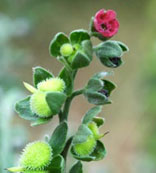 Houndstongue, Cynoglossum officinale (Class 3)
Houndstongue, Cynoglossum officinale (Class 3)
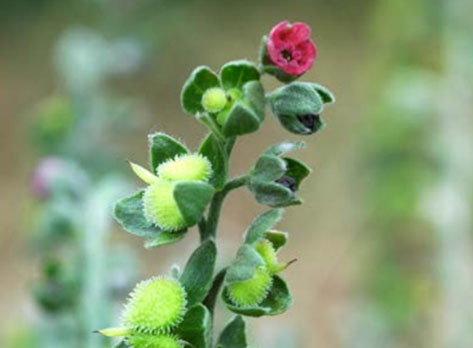
Houndstongue is a biennial in the Boraginaceae, which was originally introduced to the US as a seed contaminate in cereal grain. It has since spread to almost every Western state, listed as a noxious weed in many states. Houndstongue can form dense stands, and is toxic to livestock. Houndstongue is able to spread widely via its exceptionally sticky burs that can become embedded in fur or clothes when an animal or human brushes up against the plant.
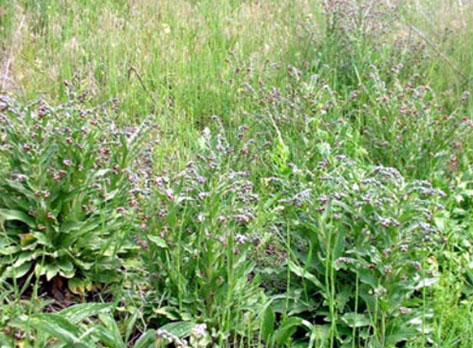 Management:
Management:
Houndstongue produces a thick, woody taproot that is best removed when the ground is moist, or with a weeding tool such as a hori hori. It’s best to pull before the plant has produced its burs, otherwise pull away from your body and be sure to dispose of all the burs.
 Common Mullein, Verbascum thapsus (Class 3)
Common Mullein, Verbascum thapsus (Class 3)

Common mullein is a biennial in the Scrophulariaceae that produces a basal rosette its first season, followed by a 3-7 ft tall stalk of yellow flowers its second year. Originally from Eurasia, this plant is not yet listed as invasive in Utah but can spread rapidly and form dense stands. Each plant can produce 100,000 seeds that can survive in the seed bank for 100 years.
Management:
Hand pulling before the plants go to seed is most effective, removing the roots or severing below the soil surface. Avoid tilling or mowing as soil disturbance stimulates more seedling recruitment.
 Canada Thistle, Cirsium arvense (Class 3)
Canada Thistle, Cirsium arvense (Class 3)
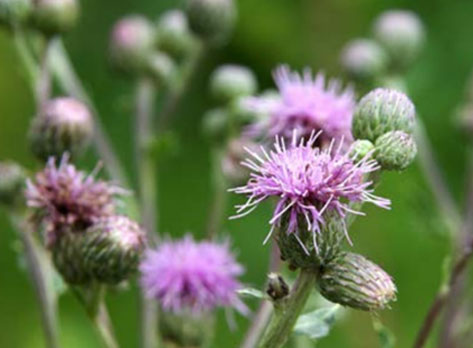
Canada thistle is actually native to Europe, despite its misleading name. As with all thistles, it’s in the Aster family, forming a head inflorescence which eventually develops into 1,000-5,000 seeds that can disperse on the wind. Canada thistle is a perennial, growing 3-5 ft tall and establishing a massive underground root system. In our tri-canyon area, this plant has become established around the town of Brighton, BCC roadsides, and other high elevation sites with plenty of soil moisture.
 Management:
Management:
Canada thistle spreads both by seed and roots, making complete eradication difficult. A major goal with Canada thistle management is to contain the spread by removing plants before they are allowed to release seeds. Mowing every 3-4 weeks through the summer can reduce nutrient storage in the roots and suppress flower and seed production. There are biocontrol agents but none have been shown to have a significant effect. The University of California Weed Research and Information Center recommends using 2,4-D on Canada thistle (postemergence) in spring in combination with mowing to keep populations under control.
 Musk thistle, Carduus nutans (Class 3)
Musk thistle, Carduus nutans (Class 3)

Musk thistle is an annual or biennial in the Aster family that can grow 5 ft tall with showy pink to magenta flower heads. Native to Europe, it dominates sites where it gets established, out competing native vegetation. The majority of the musk thistle in the tri-canyons can be found in disturbed areas around Solitude Mountain Resort.
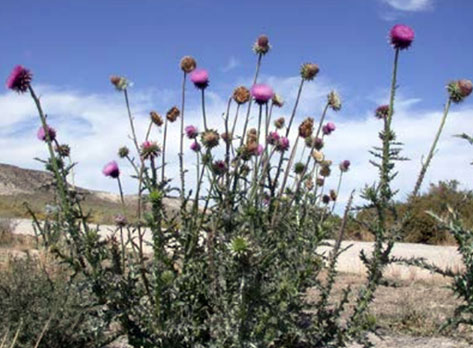 Management:
Management:
Hand-pulling these plants is effective and kills the plant. Be sure to remove as much of the root as possible, and try to pull before the plant goes to seed. Contain and dispose of all seeds.
 Scotch thistle, Onopordum acanthium (Class 3)
Scotch thistle, Onopordum acanthium (Class 3)
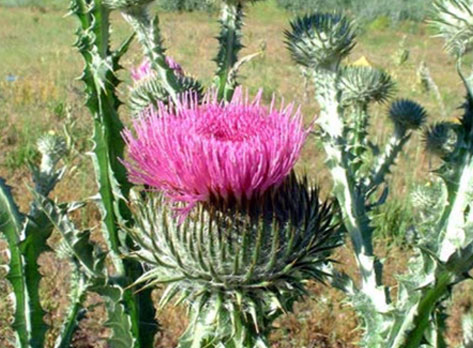
Native to Eurasia, scotch thistle is a biennial in the Aster family that can be found in lower elevation disturbed areas, especially on dry, bare slopes. Seeds can persist in the soil for long periods, and break dormancy in high moisture conditions. A distinctive feature of this plant is the winged, spiky stems and fuzzy, gray-green leaves.
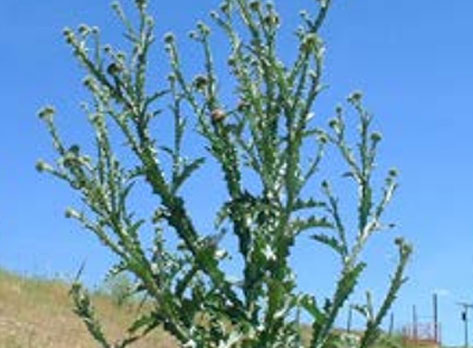 Management:
Management:
Small infestations can be removed manually, by digging up plants and severing the root below the soil surface. Be sure to wear gloves, and contain any seeds and dispose of them.
 Phragmites, Phragmites australis (Class 3)
Phragmites, Phragmites australis (Class 3)
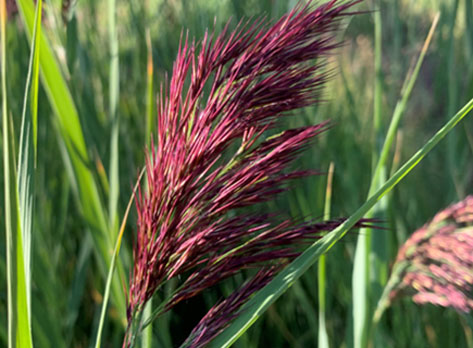
Originally from Europe, phragmites is a perennial plant in the Poaceae (grass family). It creates dense patches that spread by rhizomes and seed, becoming a monoculture if left unmanaged. It thrives in moist soil near water but also has been found on dry, high elevation slopes. There are currently only a few small patches in the tri-canyons, but this species is a high priority for containment. There is a native species of phragmites that can be difficult to distinguish from the invasive species. If you think you found the invasive phragmites, please contact the Plant Stewardship Director.
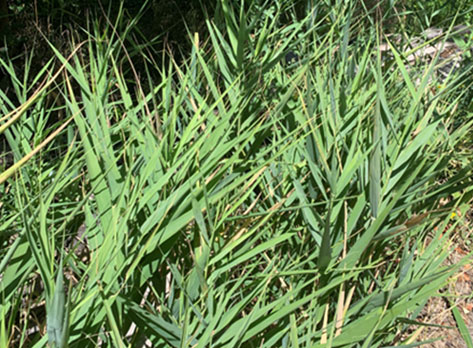 Management:
Management:
Once established, phragmites is extremely difficult to eradicate: try to prevent new populations from establishing. The Jordan River Commission and Utah DNR Division of Forestry, Fire, and State Lands recommends mowing in June-July to improve access for spraying, and treating with an herbicide mixture of aquatic-approved glyphosate, aquatic-approved, non-ionic surfactant, and ammonium sulfate between July-September.
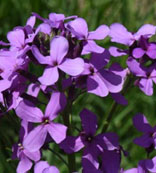 Damesrocket, Hesperis matronalis (Class 4)
Damesrocket, Hesperis matronalis (Class 4)

Damesrocket, a highly competitive annual or herbaceous perennial, is prohibited for horticultural use in the State of Utah. This plant is originally from Eurasia, and was brought to the US for its beautiful flowers, attraction for butterflies, and sweet scent. Check your seed mixes to make sure all components are native before spreading, especially if you live in the tri-canyons.
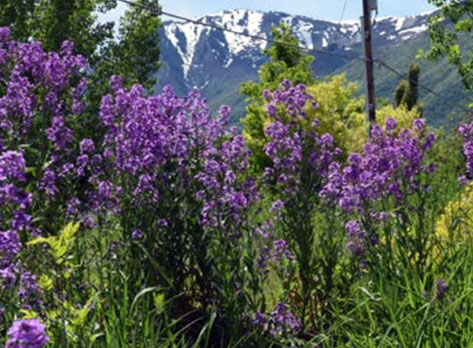 Management:
Management:
If found in the tri-canyons, contact the Plant Stewardship Director immediately. Hand-pull before plants go to seed to reduce spread.
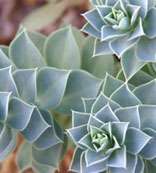 Myrtle Spurge, Euphorbia myrsinites (Class 4)
Myrtle Spurge, Euphorbia myrsinites (Class 4)

Myrtle spurge is an escaped ornamental plant that spreads aggressively through open spaces and is prohibited in Utah. Native to Eurasia, myrtle spurge is a herbaceous perennial in the Euphorbiaceae with a widespread distribution in the Wasatch Front. Seeds can be flung 15 feet, and vegetation contains a toxic, milky sap.
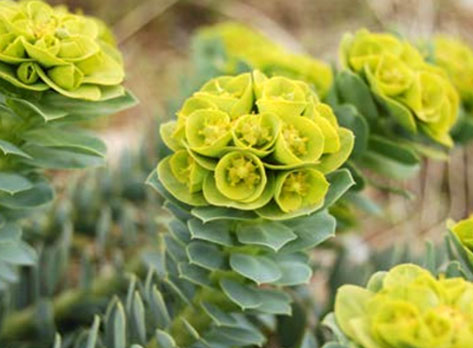 Management:
Management:
For smaller populations, hand pulling can be effective. WEAR GLOVES AND EYE PROTECTION. When stems are broken, toxic milky sap is released. For chemical treatment, Utah DNR has had success treating with Roundup (Glyphosate) and Telar (Chlosulfuron).
Garlic Mustard, Alliaria petiolata (Class 1B)

Originally native to Europe and most likely introduced as a culinary herb, garlic mustard is a biennial forb in the mustard family (Brassicaceae) that grows in the understory of woodlands and forests. During its first year, garlic mustard produces a rosette of kidney-shaped leaves. The second year it produces white flowers followed by ~7000 seeds. The best way to identify this species is by smelling the foliage which has a strong garlic odor. Vegetative parts of the plant seem to have allelopathic effects on surrounding plants.
 Management:
Management:
Plants should be removed from the environment before they are allowed to go to seed. Once garlic mustard gets established in an area it is extremely difficult to eradicate, so preventing spread is the number one priority. In established populations, a combination of hand pulling and chemical treatment can keep populations under control. The University of California Weed Research and Information Center recommends using the herbicide 2,4- D postemergence on rapidly growing plants before flowering. If you find garlic mustard on your property or anywhere in the Central Wasatch, contact CCF’s Plant Stewardship Director.
Oxeye Daisy, Leucanthemum vulgare (Class 1B)

Oxeye daisy is a rhizomatous perennial that was originally introduced in the horticulture trade. It is often found in meadows, roadsides, waste areas, as it can tolerate poor soils and is drought tolerant. In the canyons, it has been planted as a backdrop for wedding photography at some of the ski resorts. If not controlled properly, it can grow so densely that it excludes native vegetation.
 Management:
Management:
Dig up roots & rhizomes if possible, or mow before it goes to seed. Prevent seed heads from releasing into the environment. The University of California Weed Research and Information Center recommends treating with the herbicide 2,4-D and a preemergent (metsulfuron) in the spring and while plants are flowering.
Dyer’s Woad, Isatis tinctoria (Class 2)

Dyer’s woad is a biennial forb in the mustard family (Brassicaceae) that grows in dense clusters and out competes native plants. Dyer’s Woad is a lower elevation invasive species that thrives in dry, rocky soil. Due to its habitat preferences, this species is a major priority for containment before it spreads to other foothill areas.
 Management:
Management:
Hand pulling is an effective management for this species, especially when the ground is wet and soft. Try to remove roots as much as possible, because dyer’s woad will go to seed again during the same growing season if chopped off above the root crown.
Yellow Toadflax, Linaria vulgaris (Class 2)

Yellow toadflax (also called butter and eggs toadflax) is a perennial flowering plant from Europe that is locally contained to just a few populations in the Tri-canyon area. It can survive well at high elevations and can form dense patches that displace native plants. It can reproduce by seed and roots.
 Management:
Management:
Hand-pulling is only effective on seedlings before the expansive underground root network has been established. There is an effective biocontrol available (a weevil) that reduces seed production. For chemical control, the University of California Weed Research and Information Center recommends 2,4-D or glyphosate.
Dalmatian Toadflax, Linaria dalmatica (Class 2)

Dalmatian toadflax is a perennial flowering plant that can tolerate habitats from the Wasatch Front all the way to higher elevations around Alta Ski area. This plant can spread rhizomatously and resprout from roots when pulled as well as produce 500,000 seeds per plant (under optimal conditions).
 Management:
Management:
There is a biocontrol weevil available for this plant which is the most effective management tool for this species. Hand-pulling is not effective for this species.
Leafy Spurge, Euphorbia esula (Class 2)

Leafy Spurge is an herbaceous perennial plant with only a couple small populations in the Tri-canyons so far. In other areas of the US, this species forms dense, clonal patches that suppress native vegetation.
 Management:
Management:
Pulling is not effective, this species needs to be sprayed every year with max label strength using 2,4-D or glyphosate, as recommended by the University of California Weed Research and Information Center.
Spotted Knapweed, Centaurea stoebe var. micranthos (Class 2)

Spotted Knapweed is a biennial to short-lived perennial which usually gets established in disturbed areas but can spread into native plant communities and outcompete natives. Originally from Europe, this plant has become invasive in much of the Western US and has a deep, persistent taproot. There is also evidence to suggest Spotted Knapweed is allelopathic. One plant can produce 40,000 seeds.
 Management:
Management:
A combination of repeated hand pulling and chemical treatment (the University of California Weed Research and Information Center recommends 2,4-D) works best for removing this plant. Treatment needs to be repeated multiple times throughout the season. If hand pulling, BE SURE TO WEAR GLOVES as spotted knapweed contains carcinogenic compounds that could be harmful to skin.
Houndstongue, Cynoglossum officinale (Class 3)

Houndstongue is a biennial in the Boraginaceae, which was originally introduced to the US as a seed contaminate in cereal grain. It has since spread to almost every Western state, listed as a noxious weed in many states. Houndstongue can form dense stands, and is toxic to livestock. Houndstongue is able to spread widely via its exceptionally sticky burs that can become embedded in fur or clothes when an animal or human brushes up against the plant.
 Management:
Management:
Houndstongue produces a thick, woody taproot that is best removed when the ground is moist, or with a weeding tool such as a hori hori. It’s best to pull before the plant has produced its burs, otherwise pull away from your body and be sure to dispose of all the burs.
Common Mullein, Verbascum thapsus (Class 3)

Common mullein is a biennial in the Scrophulariaceae that produces a basal rosette its first season, followed by a 3-7 ft tall stalk of yellow flowers its second year. Originally from Eurasia, this plant is not yet listed as invasive in Utah but can spread rapidly and form dense stands. Each plant can produce 100,000 seeds that can survive in the seed bank for 100 years.
Management:
Hand pulling before the plants go to seed is most effective, removing the roots or severing below the soil surface. Avoid tilling or mowing as soil disturbance stimulates more seedling recruitment.
Canada Thistle, Cirsium arvense (Class 3)

Canada thistle is actually native to Europe, despite its misleading name. As with all thistles, it’s in the Aster family, forming a head inflorescence which eventually develops into 1,000-5,000 seeds that can disperse on the wind. Canada thistle is a perennial, growing 3-5 ft tall and establishing a massive underground root system. In our tri-canyon area, this plant has become established around the town of Brighton, BCC roadsides, and other high elevation sites with plenty of soil moisture.
 Management:
Management:
Canada thistle spreads both by seed and roots, making complete eradication difficult. A major goal with Canada thistle management is to contain the spread by removing plants before they are allowed to release seeds. Mowing every 3-4 weeks through the summer can reduce nutrient storage in the roots and suppress flower and seed production. There are biocontrol agents but none have been shown to have a significant effect. The University of California Weed Research and Information Center recommends using 2,4-D on Canada thistle (postemergence) in spring in combination with mowing to keep populations under control.
Musk thistle, Carduus nutans (Class 3)

Musk thistle is an annual or biennial in the Aster family that can grow 5 ft tall with showy pink to magenta flower heads. Native to Europe, it dominates sites where it gets established, out competing native vegetation. The majority of the musk thistle in the tri-canyons can be found in disturbed areas around Solitude Mountain Resort.
 Management:
Management:
Hand-pulling these plants is effective and kills the plant. Be sure to remove as much of the root as possible, and try to pull before the plant goes to seed. Contain and dispose of all seeds.
Scotch thistle, Onopordum acanthium (Class 3)

Native to Eurasia, scotch thistle is a biennial in the Aster family that can be found in lower elevation disturbed areas, especially on dry, bare slopes. Seeds can persist in the soil for long periods, and break dormancy in high moisture conditions. A distinctive feature of this plant is the winged, spiky stems and fuzzy, gray-green leaves.
 Management:
Management:
Small infestations can be removed manually, by digging up plants and severing the root below the soil surface. Be sure to wear gloves, and contain any seeds and dispose of them.
Phragmites, Phragmites australis (Class 3)

Originally from Europe, phragmites is a perennial plant in the Poaceae (grass family). It creates dense patches that spread by rhizomes and seed, becoming a monoculture if left unmanaged. It thrives in moist soil near water but also has been found on dry, high elevation slopes. There are currently only a few small patches in the tri-canyons, but this species is a high priority for containment. There is a native species of phragmites that can be difficult to distinguish from the invasive species. If you think you found the invasive phragmites, please contact the Plant Stewardship Director.
 Management:
Management:
Once established, phragmites is extremely difficult to eradicate: try to prevent new populations from establishing. The Jordan River Commission and Utah DNR Division of Forestry, Fire, and State Lands recommends mowing in June-July to improve access for spraying, and treating with an herbicide mixture of aquatic-approved glyphosate, aquatic-approved, non-ionic surfactant, and ammonium sulfate between July-September.
Damesrocket, Hesperis matronalis (Class 4)

Damesrocket, a highly competitive annual or herbaceous perennial, is prohibited for horticultural use in the State of Utah. This plant is originally from Eurasia, and was brought to the US for its beautiful flowers, attraction for butterflies, and sweet scent. Check your seed mixes to make sure all components are native before spreading, especially if you live in the tri-canyons.
 Management:
Management:
If found in the tri-canyons, contact the Plant Stewardship Director immediately. Hand-pull before plants go to seed to reduce spread.
Myrtle Spurge, Euphorbia myrsinites (Class 4)

Myrtle spurge is an escaped ornamental plant that spreads aggressively through open spaces and is prohibited in Utah. Native to Eurasia, myrtle spurge is a herbaceous perennial in the Euphorbiaceae with a widespread distribution in the Wasatch Front. Seeds can be flung 15 feet, and vegetation contains a toxic, milky sap.
 Management:
Management:
For smaller populations, hand pulling can be effective. WEAR GLOVES AND EYE PROTECTION. When stems are broken, toxic milky sap is released. For chemical treatment, Utah DNR has had success treating with Roundup (Glyphosate) and Telar (Chlosulfuron).
All herbicides listed are SLPU Watershed Division approved for use in Big and Little Cottonwood Canyon watershed areas. For more information about mix rates, non-watershed treatment options, or other weed species, reference Weed Control in Natural Areas in the Western United States, produced by the University of California Weed Research and Information Center.
For more information, please contact us directly using this form

